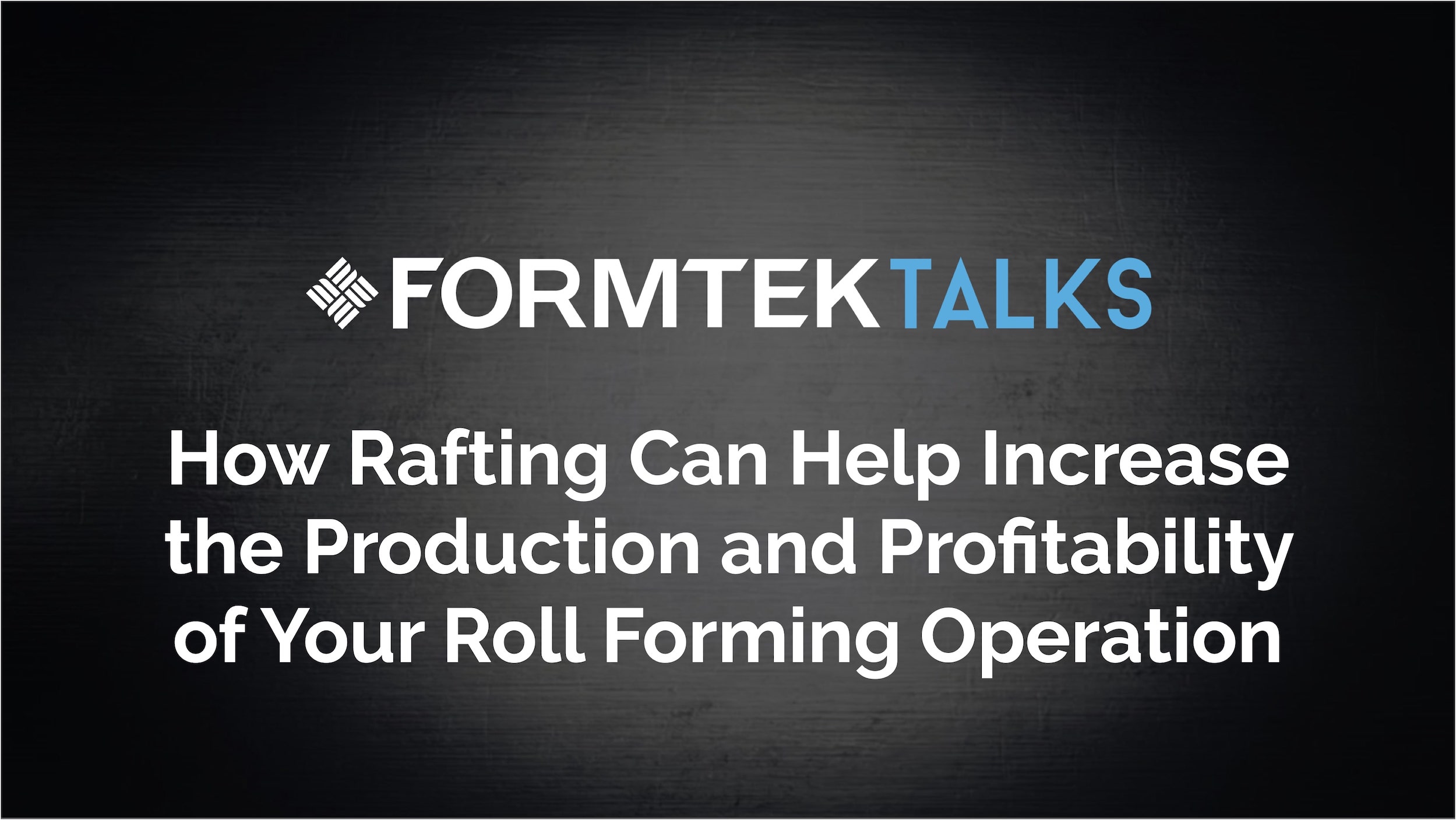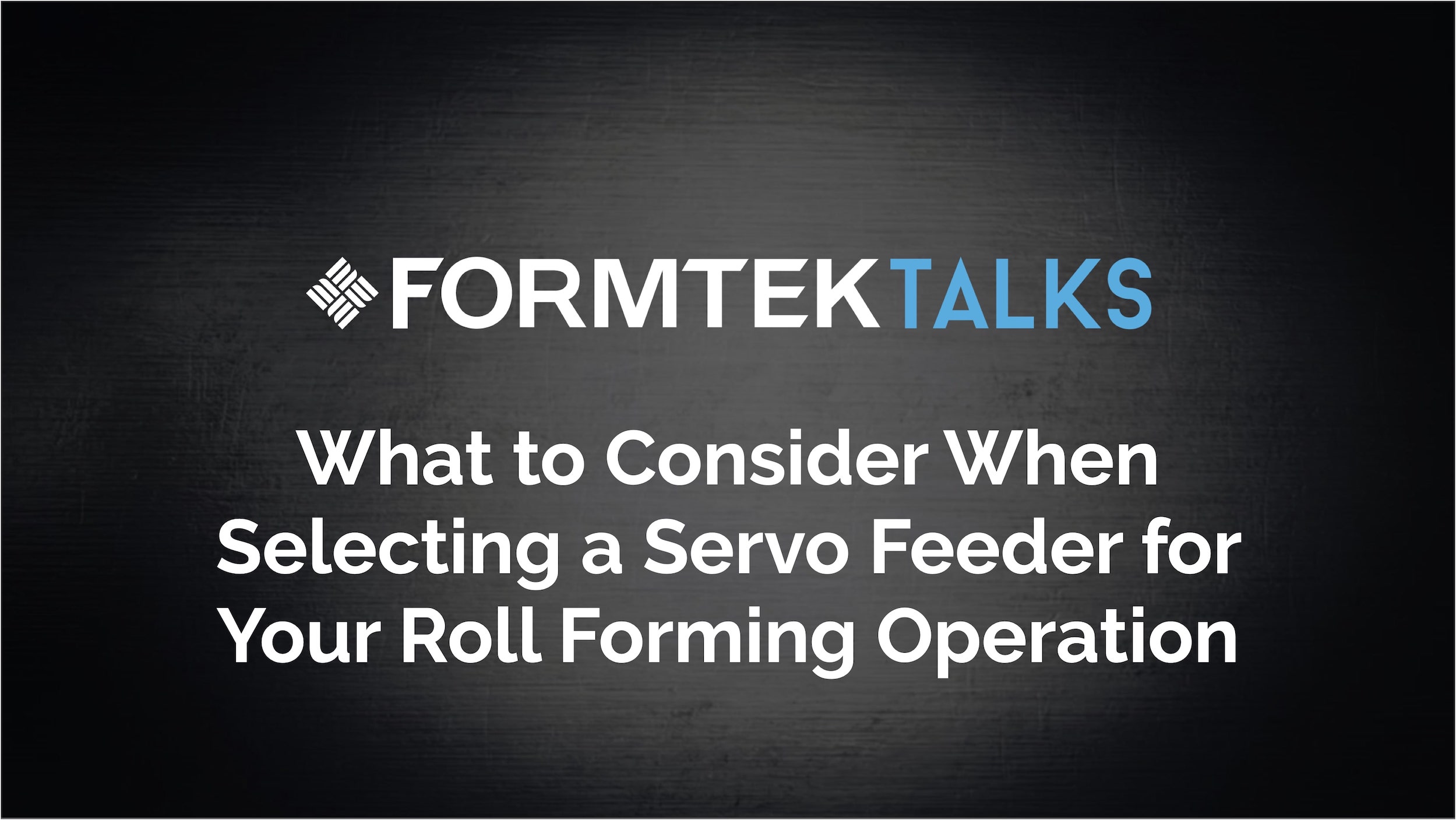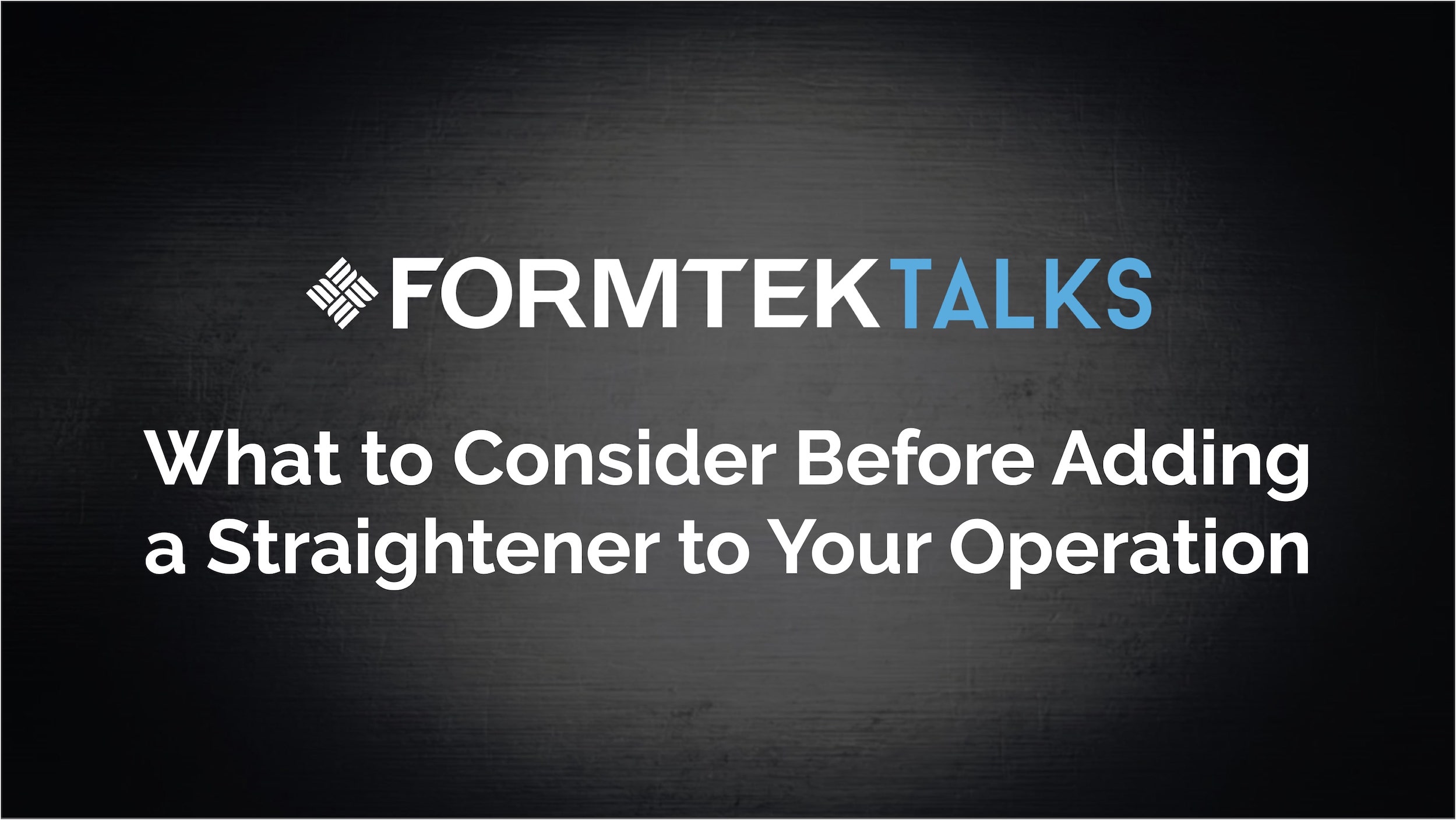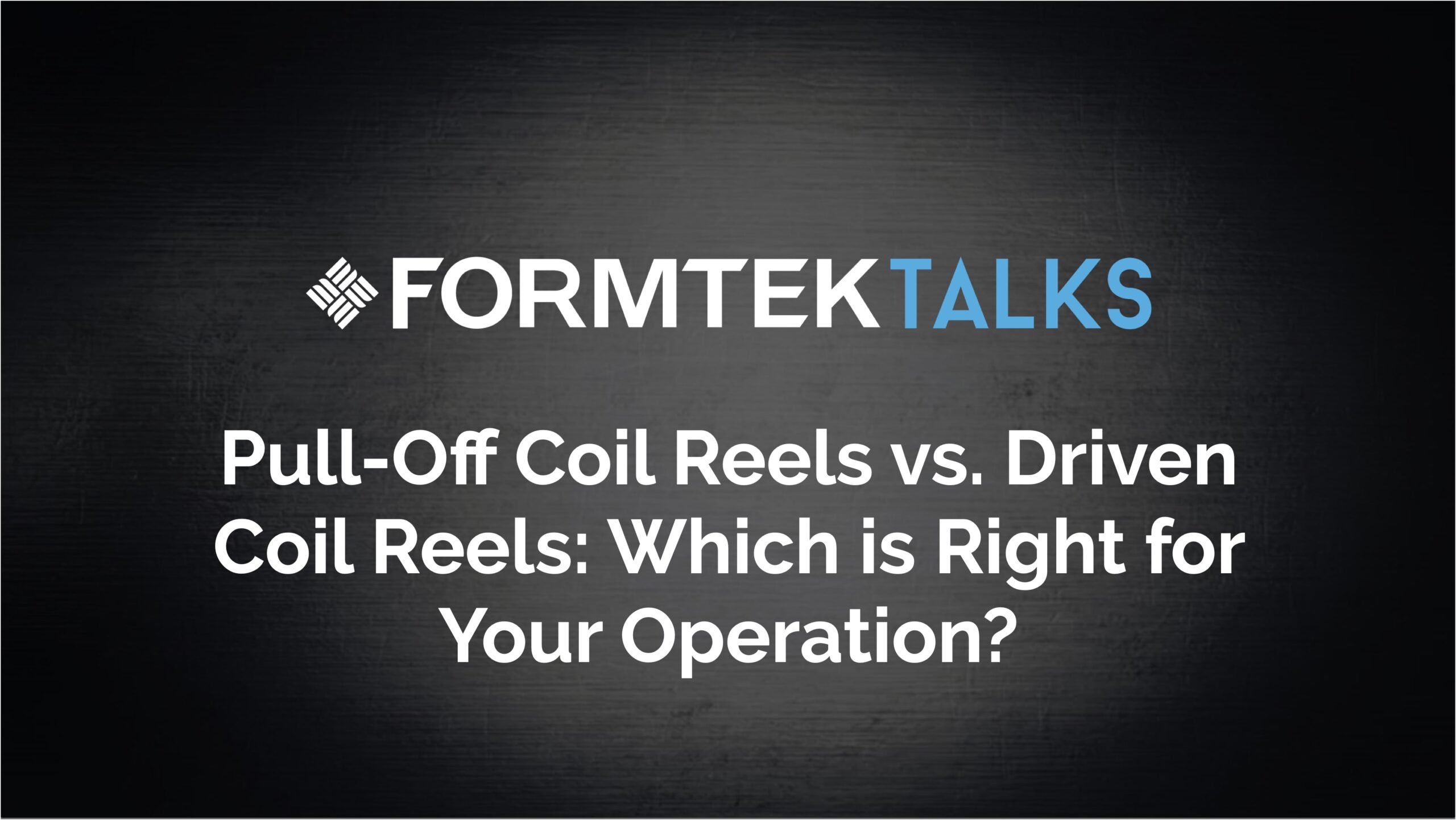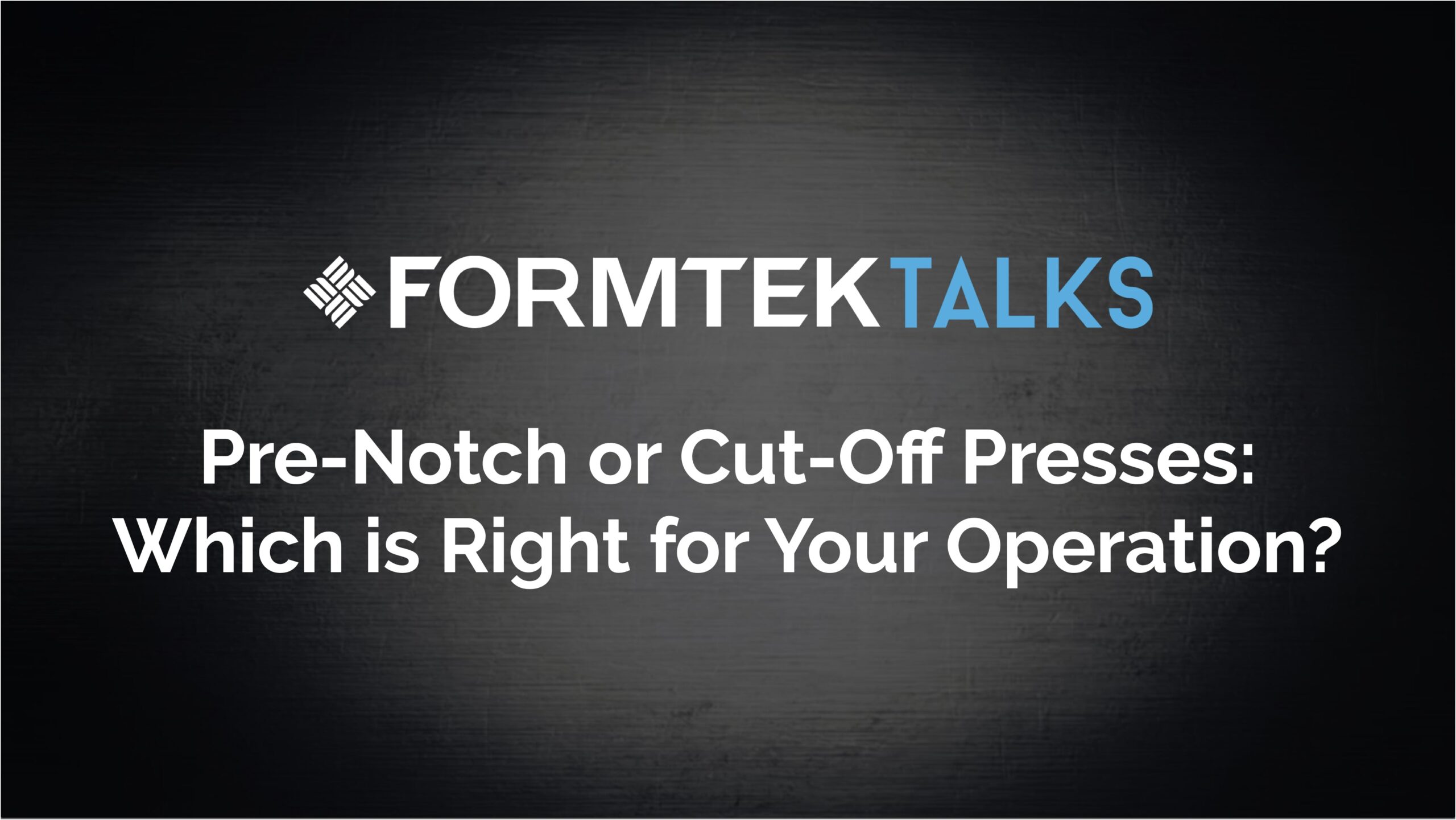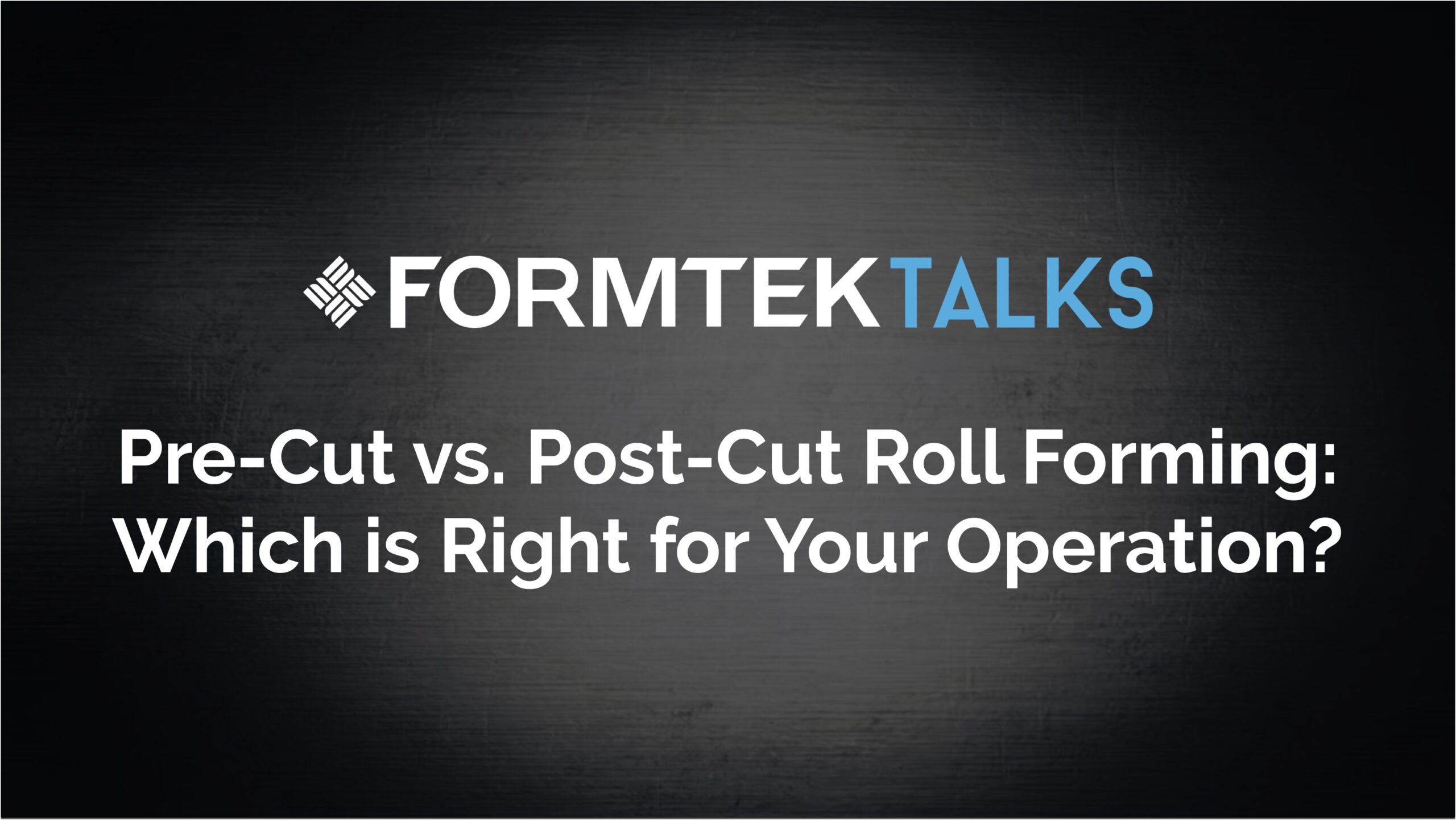Brian:
Welcome to Formtek and our podcast today. Today I have Paul Williams and Darren Muchnicki. And we’re going to talk about when you should get into roll forming. How do you justify it? Very generic question, but we get this a lot. So I’m going to start out with Darren today. Darren, when should somebody get into roll forming? How many pieces? Any rules of thumb?
Darren:
First of all, you have to be maybe a little crazy to get into it. No, I’m just kidding. Generally, it’s somebody who’s press braking, that their volumes have increased, that… I’m making the assumption that the part is roll form-able and all that. So somebody who’s press braking and the volume has gotten so big that it’s time to graduate over into roll forming. Some things are just roll formed just from the get go. But what’s a good number? Is it… It’s definitely not 30,000 feet. Usually in the several hundred thousands of feet range to be able to justify the equipment and… Because if you look at it, start thinking of how fast somebody runs. If you can run this part at a hundred feet a minute and the part is 10 feet long, it doesn’t take long to run 300,000 feet.
Brian:
Right.
Darren:
And we have customers that run 200,000 pounds in a shift.
Brian:
Wow. That’s a lot of production.
Paul:
Yeah, it is. Yeah.
Darren:
So it is a high volume production system. Now there are applications where you run slower, but still even if you’re running 20 feet a minute, and your average part length is five foot, six foot, still a lot of parts. So most times people want to make sure their machines are running or their investments running. Unless you have a specialty application where it’s like aerospace, where it’s the material costs more than anything and they just need the consistency that you get. So, sure, there’s pluses and minuses on either side of the fence, but in general, I would start looking at it once you hit the over 300,000 feet range. And definitely if you’re over a million, that’s usually a slam dunk.
Brian:
Usually a slam dunk. Paul, why would somebody… Let’s say they’re press braking.
Paul:
Mm-hmm (affirmative).
Brian:
And they’ve done well at sales and they’ve done well at supplying their customers, and now they’re getting up to the 100,000 pieces. Why not just add more press brakes?
Paul:
Well, you could. So there’s extra capital that you’re going to have to spend for that. And then also personnel and labor.
Brian:
So if you didn’t have the people or it was hard to keep the people you’re-
Paul:
Which these days, that seems to be an issue, right?
Brian:
Right. Right.
Paul:
Okay. So in some cases where your… Or they may already have a bunch of press brakes and people, by going to roll forming, one, you can redistribute your labor force into other areas of your facility or into your process. Because roll forming is going to be able to generate more footage at a higher line speed in the overall throughput of product compared to what’s going on in a press brake system. So to your first question, I want to add more press brakes. Well, you’re going to spend capital. Well, a roll forming line’s going to be capital.
Brian:
That’s correct.
Paul:
So now, to what extent? Roll forming line needs one or two people typically to run the line. It could be more, it could be just one. Well, every press brake, you got to have more people, so you have that labor, benefits, things like that. Now that that comes into that costing, of looking at that. And the other thing too, is that it isn’t just necessarily press braking, you could be buying some roll formed parts on the outside, from a vendor or a custom roll former who that’s their job to run smaller amounts, like Darren said, 30,000 pieces. They may not even want to do that, but they may, okay, to do that for you.
Brian:
Because they already have the roll former. They have open capacity.
Paul:
Right. Absolutely. Right now they could put some tooling and go for it here. But then whatever that cost is or timing or delivery. We saw that years ago where everybody went overseas, and then all of a sudden shipping costs and gas and things came… It was more expensive to ship stuff.
Brian:
Right. So now they’re bringing it back across.
Paul:
And quality. And then you had to keep inventory in place. So then they brought stuff back in-house as well. So that’s another thing of why you may get into that, because all of a sudden you have all this inventory that you have to hold, plant space is another-
Darren:
I think Paul made a good point though. There are people who produce roll formed parts under contract. And the only thing that you would be paying for is the cost of tooling. So if you’re in that, say under half a million feet range, it’s pretty easy to go to a custom roll former and have them produce the parts for you. And then if there’s variations in your requirements, the only thing that you’re paying for with them, obviously you pay for the piece part price, but you also pay for the tooling. And that’s it. So a lot of times we see people who graduate.
Brian:
Okay.
Darren:
They may start out with a small press brake. Oh, I have too much. I want to go to roll forming. Well, I don’t have enough volume for…
Brian:
To buy a roll former.
Darren:
Buy a roll former.
Paul:
Right. Sure, yeah.
Darren:
So I’m going to go to the custom roll former. Go to the custom roll former, oh, my volume has taken off, I’m not giving them two million feet to run because it’ll cost me an arm and leg. I can produce it for less myself. Because overall in producing it, your labor is only a small percentage. It’s 6-7% in the piece part price, is your labor. So it’s very, very small. So you’re really dealing with the material aspect. And now with the way things have been up to this point with capital depreciation, it really helps to make that investment where you can take that full depreciation of one year against your business, and then you have that asset that you’re going to use and produce if you have that volume. So…
Brian:
Okay. Is there a downside to going to roll forming from press braking? From a part quality perspective.
Darren:
Yeah, part quality. It depends on the application. There’s some applications, press brake is still a better solution.
Brian:
Better solution.
Darren:
So that’s time to talk to somebody about it and really review from top to bottom what you’re doing.
Paul:
Yeah. And it brings up a really good point is, what’s one of the things that we always see are that the initial part prints we’ll see, or parts will get crisp radiis. Parts really looking really super nice. And the reason being, because of that, of the radiuses and stuff like that, because on a press brake, you’re coming down with a top punch and a die and you can set those radiuses. In roll forming, we’re really not setting the radiuses per se.
Brian:
All the time.
Paul:
All the time, right.
Brian:
We try to get male, female rolls together to get the best part.
Paul:
Absolutely. But it’s not like coming down with a correct punch in a die and actually nailing that corner. So some of that is you have to have that realization, does it really have to be that good? And I don’t want to sound like roll forming you’re just going to get a terrible part, that’s not the case. But compared to press brake parts, you will see there’s some kind of a difference.
Darren:
And then the other way people get into roll forming is they come from extrusions, right?
Paul:
Yeah.
Darren:
They come from extrusion. They have an extruded part. Can I make this extruded part into a roll formed part? That’s the other way we get it. And usually extrusions are expensive because they’re typically aluminum. They typically have thicker material and thinner material, depending on the profile and what they’re making, where roll forming has been far less expensive. But it depends on what the application is and can they get away from aluminum and go into something that could rust or something. It just depends.
Brian:
Extrusions have a very specific form to it.
Paul:
Correct.
Brian:
And you can’t always mimic that in the roll forming world.
Darren:
You can’t always do it. Sometimes you can.
Paul:
Well, the other thing with press brakes too, that reminded me, so an extrusion it also now, if you had to put secondary holes or something, or a shear form, or something in that extrusion that you could put in a roll forming line, but the same would also go to press brakes. So you press brake the part or you have to initially put some holes or some kind of features in the part that are requiring multiple applications. And as that volume increases, it may not be that million or 500,000, but maybe it’s 200,000 feet or parts per year or something like that, that extra time and that labor time. People don’t think about the overall… We always talk about throughput. So on a roll forming line, we know if we’re running, everything’s going and we’re hitting 50 feet a minute, 150 feet a minute, whatever that is, we know what we’re generating. What are you generating when you hand feed this? Yeah, we have the cycles of the press brake or something like that. The operator takes it out, so there’s that cycle time. And then it sits in the bin until it goes to another operation. How do you account for that? You’re taking up some space, but how do you account for that? And then for some of the [inaudible 00:09:34] we try to let people know how to think about that application and think about the ramifications of that downtime.
Brian:
Correct. All right. Well, thank you, gentlemen. If you have other questions or other topics, please visit us on formtekgroup.com. Thank you very much.








